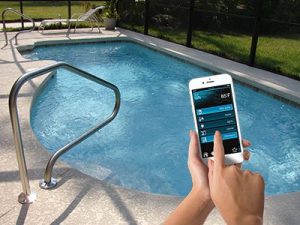A pH digital tester can be handy also, especially at a commercial pool account to make sure the pH is within range of the local Health Department regulations The benefits of a digital water tester are that you get spot results and they can perform tests the reagents cannot, such as Total Dissolved Solids (TDS), Salinity (Salt level) and ORP. How do you use a Digital Pool Tester?
Digital water testers can perform tests with a small margin of error +/- of 1%
Turn on the tester & initialize
Select a parameter to test
Dip probes into the H2O sample
Wait for readings to display
Record results
Rinse probes between tests
Interpret readings against guidelines
Store properly after use
Introduction
Digital pool testers are advanced devices designed to measure various parameters of pool water with precision and convenience. Unlike traditional test kits that rely on color comparison or chemical reactions, digital testers use sensors or probes to analyze the water and provide digital readouts of the results. These testers can measure parameters such as pH, chlorine/bromine levels, total alkalinity, calcium hardness, and sometimes cyanuric acid, providing accurate and reliable data for pool maintenance. Digital pool testers offer several advantages, including faster testing times, greater accuracy, and ease of use, making them an increasingly popular choice for pool owners and professionals alike.
How to Use a Digital Pool Tester
Getting Started
Unboxing and assembling the digital tester
Preparing for Testing
A. Ensure the tester is calibrated (if necessary)
B. Prepare the pool water sample according to the tester’s instructions
Turn on the digital tester and allow it to initialize

Dip the tester’s probes or sensors into the water sample B. Wait for the tester to analyze the sample and display the results C. Record the readings provided by the digital tester
Understanding the parameters being measured
Maintenance and Care of a Digital Tester

Maintaining and caring for your digital pool tester is essential to ensure accurate and reliable test results. Here are some maintenance tips:
- Clean Probes or Sensors: After each use, rinse the probes or sensors of the tester with clean water to remove any residual pool water or debris. Avoid using harsh chemicals or abrasive cleaners, as they may damage the probes.
- Store Properly: Store the digital pool tester in a clean, dry place away from direct sunlight and moisture when not in use. Proper storage helps prevent damage and extends the life of the tester.
- Calibrate Regularly (if applicable): If your digital tester requires calibration, follow the manufacturer’s recommendations for calibration frequency and procedures. Regular calibration helps maintain accuracy and reliability in test results.
- Replace Batteries (if applicable): If the digital tester is battery-powered, monitor the battery level regularly and replace batteries as needed to ensure uninterrupted operation.
- Avoid Impact or Rough Handling: Handle the digital pool tester with care to avoid dropping or damaging it. Rough handling can affect the accuracy of the tester’s readings and may cause premature failure.
- Follow Manufacturer’s Instructions: Always follow the manufacturer’s instructions for using, cleaning, and maintaining the digital pool tester. Failure to do so may void the warranty or compromise the performance of the tester.
- Keep User Manual: Keep the user manual provided with the digital tester for reference. The manual contains important information on operation, maintenance, troubleshooting, and safety precautions.
By following these maintenance tips, you can ensure that your digital pool tester remains in good working condition and continues to provide accurate and reliable test results for your pool water.
Properly storing the digital tester
References:
Leslies Pools- Digital Pool Testers
FAQ’s
- Is it necessary to replace the batteries in the digital tester? Yes, it is necessary to replace the batteries in the digital pool tester when they are depleted to ensure proper functioning. Low battery levels can affect the accuracy and reliability of test results. Refer to the user manual for the tester to determine the type of batteries required and the recommended replacement interval.
- What should I do if the digital tester displays an error message? If the digital tester displays an error message, refer to the user manual for troubleshooting instructions. Common solutions may include recalibrating the tester, ensuring proper probe placement, or checking battery levels. If the issue persists, contact the manufacturer’s customer support for further assistance or to arrange for repairs.
- How do I clean the probes of the digital tester?



